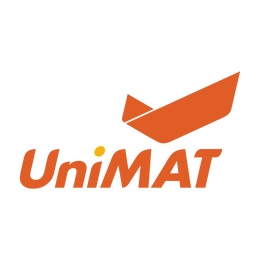In order to help UniMAT customers use IoT products more conveniently, a series of articles on IoT application courses are specially launched. The articles will comprehensively introduce the software and hardware, operation methods, related configurations, typical applications, common problems and other knowledge of UniMAT IoT. After reading the full text, you can have a comprehensive understanding of the Internet of Things, and achieve more with less for the application of the Internet of Things.
In this issue, we will bring you the equipment upgrade of UniMAT Internet of Things 1.0 to 2.0.
1.0/2.0 refers to the firmware version of the IoT product, which has nothing to do with the hardware. You can download the firmware and switch versions through the Uniface software.
1.0 is mostly used for the U niMAT Internet of Things platform www.unimatiot.com.cn, and 2.0 is mostly used for the second-level domain name platform xxx.deviot.cn .
The second-level domain name platform can also manage 1.0 devices, templates, configurations, etc.
1. Data transfer
It is important to note that 2.0 devices can only be used on second-level domains.
The first step in upgrading from a 1.0 device to a 2.0 device is to transfer the configured real-time data, historical data and alarm data. In order to reduce the workload of this step, it is convenient for customers to use. Added the new function of data export. There is data export by Uniface, and configuration upload on Anyaccess. complete together.
01Upgrade preparation
For the first upgrade, you need to download the HMI programming software Uniface from the official website. The figure below only represents the location of the software at the time of writing. It is normal if the location of the software is different from the documentation.
Version distinction:
Open Anyaccess, select the device, go to Basic Settings > Basic Information > Device Version. In the device version, the fifth last number is the IoT version information, the number is 2, version 2.0; the number is 1, version 1.0.

Version switch:
Open Uniface, download the project, and when downloading, check the switch version to switch the IOT version. When switching, there will be a version prompt, please confirm in time, otherwise the download will fail. After checking download, the original 1.0 version will be upgraded to 2.0; the original 2.0 will return to 1.0.
02Uniaface data export

03Anyaccess configuration upload
The export file is a json terminated file.
Note: ① Do not modify the file format Data import only supports json format.
②The 1.0 device does not support configuration upload. If the device is 1.0, please upload the configuration after the device is upgraded to 2.0.
2. Platform settings
After the device is upgraded, the device management and templates need to be upgraded and modified.
01 Equipment management
Note: ①If there is no response after clicking Repair, you can click Delete and then re-add the virtual device.
②When using non-standard templates, you need to add virtual devices again.
02Template management
After the device is upgraded to 2.0, the corresponding template should also be changed to 2.0.
Note: When the device is bound, it cannot be modified, you need to unbind it first, and then edit it.


03 Template data
There are device data changes after converting from 1.0 to 2.0. The original data can no longer be displayed. Data needs to be re-bound in the template to ensure that your cloud configuration can properly display the data. The specific operation is no different from the previous cloud configuration method. All are in General → Data item click to select.

3. Conversion of non-standard templates
Non-standard template from 1.0 to 2.0.
The first step is the same as the standard template, click Edit to modify the device version.
The second step is for non-standard template data. There is a big difference in use from the original 1.0 device, which requires special attention. Non-standard templates need to set the template data source . Due to the high flexibility of non-standard templates, you can refer to the instructions for specific use, and will not repeat them here.

4. Using the Unimatiot domain name platform, that is, the migration of the old platform
If the old platform is migrated to the second-level domain name platform, the device can be directly added to the virtual device. However, template migration requires contacting local technology or sales for migration operations.

![[Technical Classroom] UniMAT Internet of Things Application Course (9) - Internet of Things 1.0 to 2.0 Equipment Upgrade](http://www.unimatautomation.com/cdn/shop/articles/4164_7c0de2bd-f9c6-4bd5-ab4d-160f74d9086f.jpg?v=1663296117&width=460)